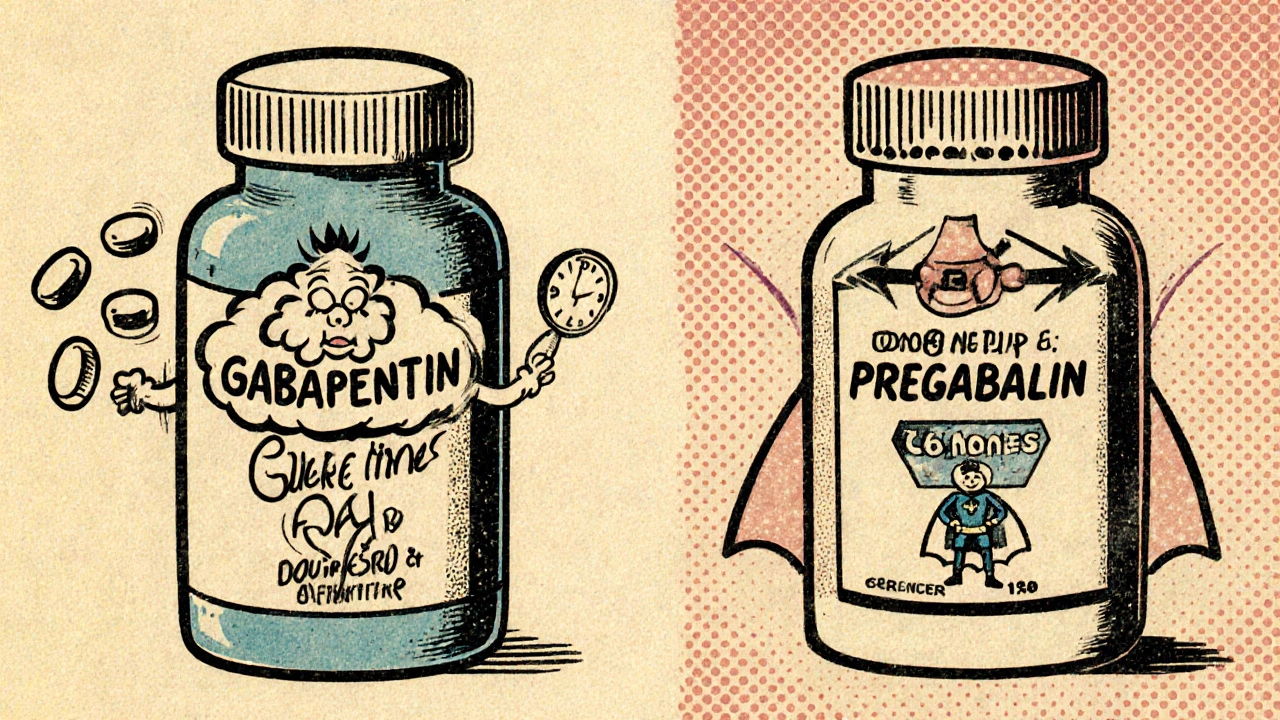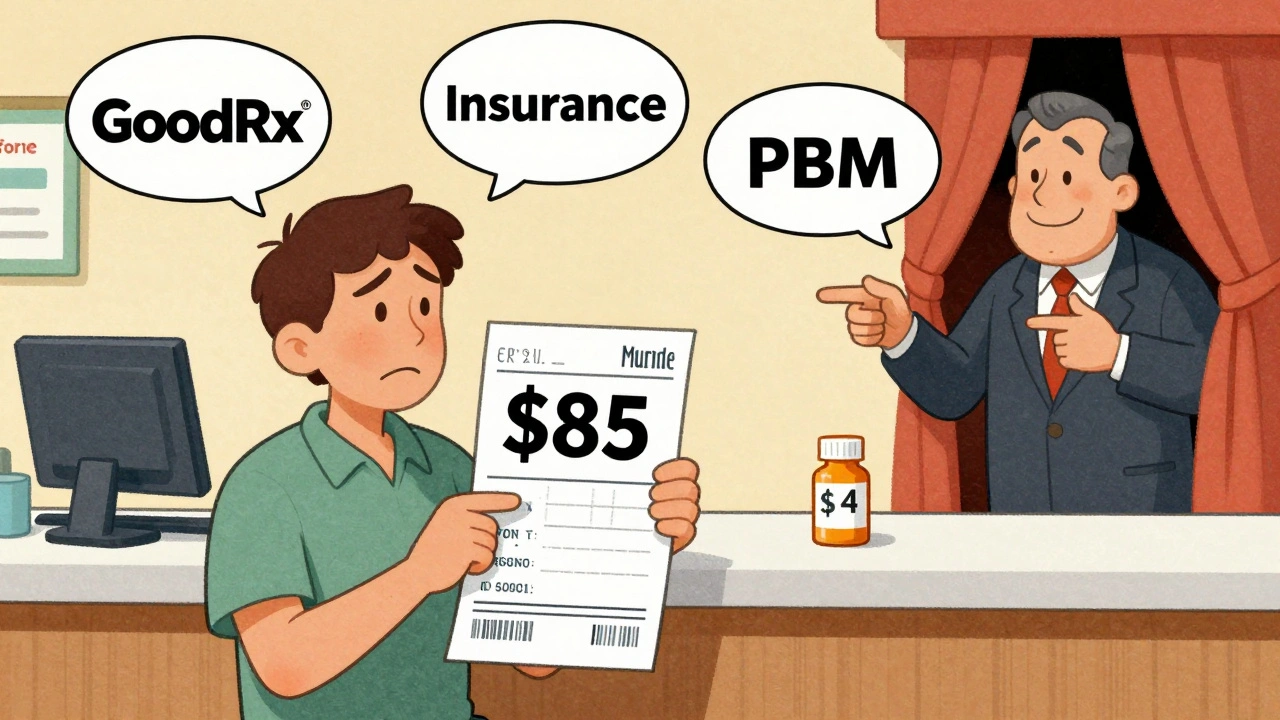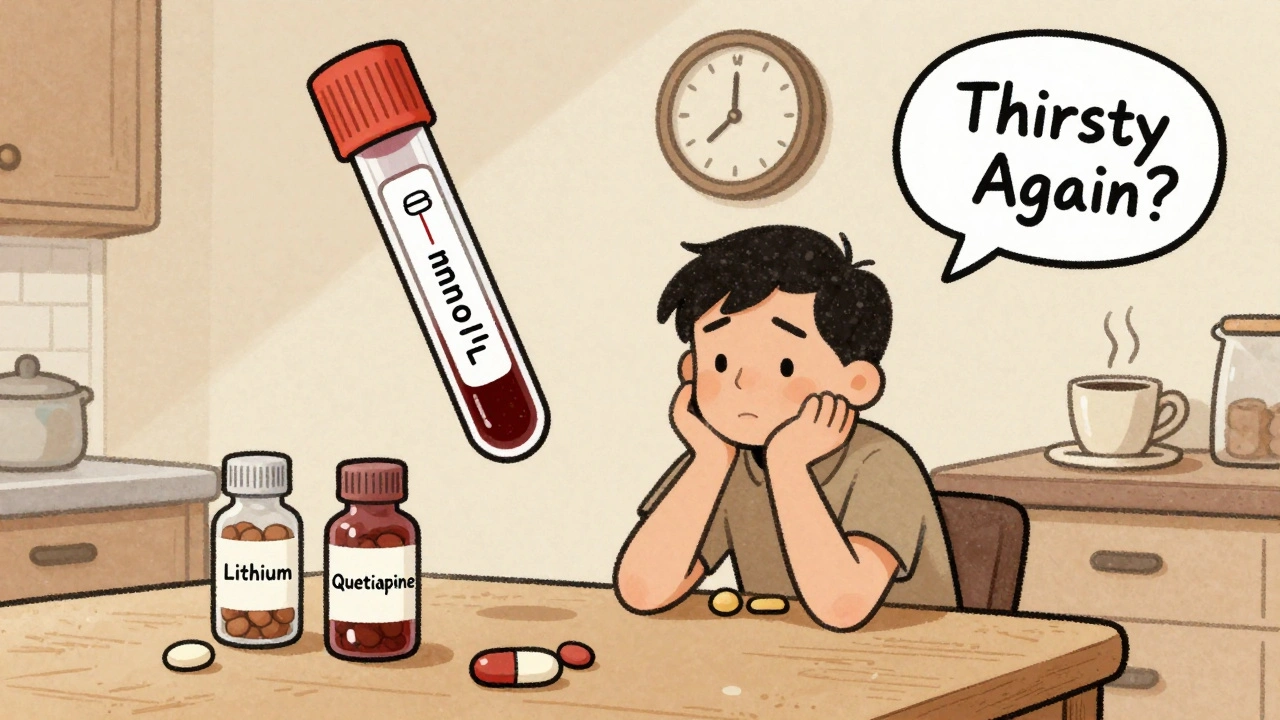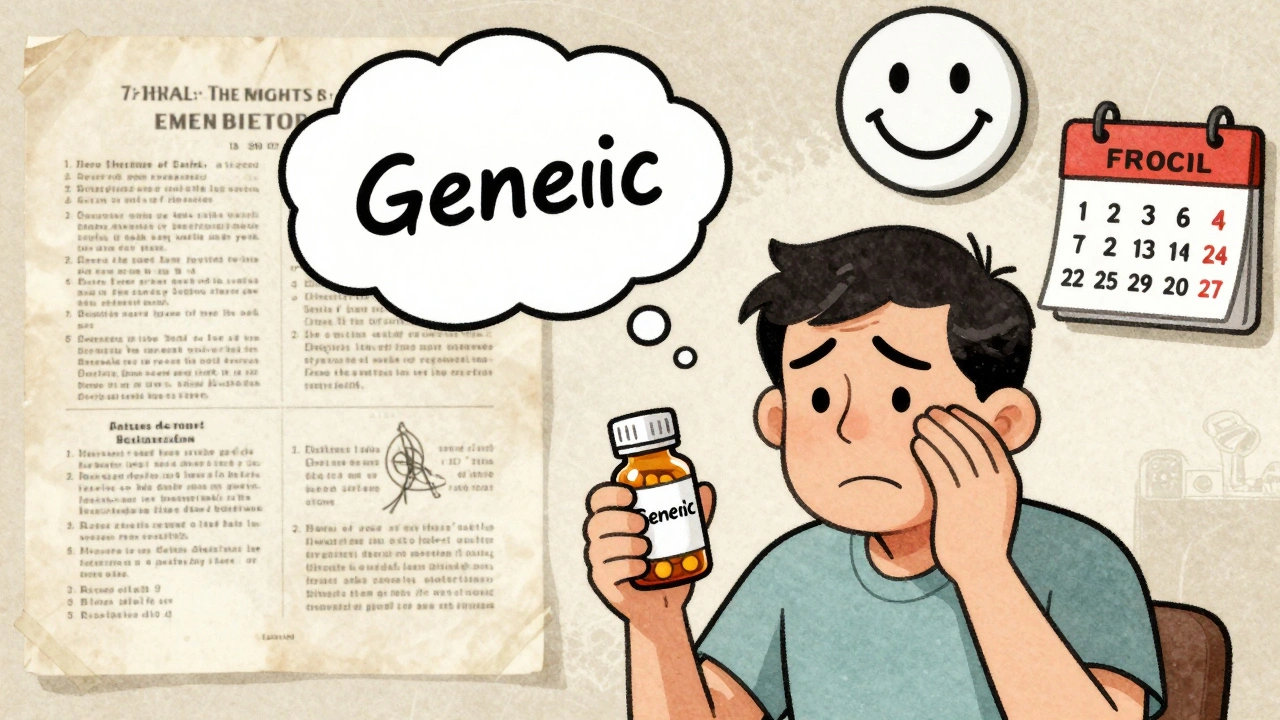What is neuropathic pain?
Neuropathic pain isn't the kind of ache you get from a sprained ankle or a headache. It's pain caused by damaged or malfunctioning nerves. Think of it like a faulty electrical wire in your body-when nerves get injured, they send wrong signals to your brain. You might feel burning, shooting, or electric shock-like pain even when nothing is touching your skin. Some people experience allodynia-where a light touch, like sheets brushing against their leg, feels unbearable. Others feel hyperalgesia, meaning a minor pinch feels like a stab.
This isn't rare. About 7 to 10% of adults in the U.S. live with it. Diabetes is the biggest cause, responsible for roughly 30% of cases. Other triggers include shingles, spinal injuries, chemotherapy, vitamin B12 deficiency, and even some surgeries. It doesn't always go away on its own, and over-the-counter painkillers like ibuprofen or acetaminophen rarely help. That’s where medications like gabapentin and pregabalin come in.
How gabapentin and pregabalin work
Both gabapentin and pregabalin were originally designed as anti-seizure drugs. But doctors noticed patients with nerve pain reported feeling better. That led to their approval for neuropathic pain-gabapentin in 2002 and pregabalin in 2004. They don’t work like opioids or NSAIDs. Instead, they target voltage-gated calcium channels in the nervous system, specifically the alpha-2-delta subunit. By binding to this spot, they reduce the release of pain-signaling chemicals like glutamate and substance P.
Here’s the key difference: pregabalin binds to that target about six times more tightly than gabapentin. That means it works more efficiently. You need less of it to get the same effect. Gabapentin’s absorption is unpredictable-it doesn’t absorb well at higher doses, so doubling the dose doesn’t double the effect. Pregabalin, on the other hand, absorbs consistently no matter the dose. That’s why doctors often prefer it for patients who struggle with dosing schedules or need steady relief.
Effectiveness: Which one works better?
Studies show both help, but pregabalin has a slight edge in clinical trials. In diabetic neuropathy, about 35% of patients on pregabalin get at least 50% pain relief, compared to 18% on placebo. For gabapentin, the number is closer to 30%. That might not sound like a big difference, but in pain management, even small improvements matter.
A 2021 analysis of over 4,000 patients found that 300 mg of pregabalin gave the same pain relief as 3,600 mg of gabapentin. That’s a six-fold difference in dosage. Pregabalin also works faster. In one trial, patients reached effective doses in about 8 days versus 15 days with gabapentin. Many people report feeling better within 2-3 days on pregabalin. Gabapentin often takes 2-4 weeks to build up to full effect.
But effectiveness isn’t just about numbers. One Reddit user wrote: "Pregabalin knocked my pain from 8/10 to 3/10 in 48 hours-but I gained 12 pounds in six weeks." Another said: "Gabapentin made me dizzy and I fell twice. Switched to pregabalin and had relief without dizziness at half the dose." These real-life stories show why the choice isn’t just clinical-it’s personal.
Side effects: What to expect
Both medications cause similar side effects: dizziness, sleepiness, swelling in the hands or feet, and trouble with balance. But the rates differ. About 32% of pregabalin users report dizziness, compared to 26% on gabapentin. Somnolence hits 23% with pregabalin and 19% with gabapentin.
The biggest differentiator? Weight gain. In clinical studies, 12.4% of pregabalin users gained at least 5% of their body weight. For gabapentin, it’s just 3.2%. That’s a huge gap. For someone managing diabetes or heart disease, gaining 10-15 pounds in a few weeks can make their condition worse. Patients on pregabalin often report feeling bloated, sluggish, or frustrated by clothes that no longer fit.
Gabapentin has its own issues. Because it’s taken three times a day, many people forget doses. One study found 35% of people stopped taking gabapentin because the dosing schedule was too complicated. Pregabalin is taken once or twice daily, which improves adherence. But it comes with a new risk: misuse. In 2019, the DEA classified pregabalin as a Schedule V controlled substance because of reports of recreational use and dependence. Gabapentin remains uncontrolled in most states, though some are moving to restrict it.

Cost and accessibility
Cost is a major factor in real-world use. Generic gabapentin costs about $16 for 90 capsules of 300mg at most U.S. pharmacies. Generic pregabalin? Around $28 for 60 capsules of 75mg. That’s a big difference if you’re paying out-of-pocket or have a high deductible.
Medicare covers nearly all gabapentin prescriptions. Pregabalin is covered too, but sometimes requires prior authorization. In rural clinics and safety-net hospitals, gabapentin is used in 68% of cases because it’s cheaper and easier to stock. In academic medical centers and urban practices, pregabalin leads at 57%-where cost matters less than convenience and consistency.
Extended-release versions exist for both: Gralise and Horizant for gabapentin, Lyrica CR for pregabalin. These allow once-daily dosing and may improve compliance. But they’re more expensive, and insurance doesn’t always cover them.
Who gets which medication?
There’s no one-size-fits-all answer. The American Diabetes Association recommends pregabalin as the first choice for diabetic nerve pain because of its reliable absorption and faster onset. The Neuropathic Pain Special Interest Group (NeuPSIG) lists both as first-line, saying the decision should depend on the patient.
Choose pregabalin if:
- You need quick relief (within days, not weeks)
- You struggle to remember multiple daily doses
- You have access to good insurance or can afford the higher cost
- You’re not at risk for weight gain or fluid retention
Choose gabapentin if:
- Cost is a major concern
- You’ve had weight issues with other medications
- You’re in a setting where generic meds are preferred (like a community clinic)
- You’re okay with a slower, more gradual build-up to full effect
Some patients start with gabapentin because it’s cheaper. If it doesn’t work well enough after 4-6 weeks, they switch to pregabalin. Others start with pregabalin for faster results and switch to gabapentin later if weight gain becomes a problem. It’s not failure-it’s adjustment.
Dosing and titration
Dosing isn’t the same for both. Gabapentin starts low: 100-300 mg at bedtime. You increase by 100-300 mg every 2-3 days, up to a max of 3,600 mg daily in three divided doses. Because it wears off quickly, skipping a dose can bring pain back fast.
Pregabalin starts at 75 mg once or twice daily. Most people reach an effective dose of 150-300 mg daily within a week. It’s taken once or twice a day, and food doesn’t affect absorption. That makes it easier to stick with.
Both need dose adjustments if you have kidney problems. Your doctor will check your eGFR (a measure of kidney function) before prescribing. Never stop either medication suddenly. Abrupt discontinuation can cause seizures or worsen pain. Always taper down slowly over at least a week, under medical supervision.

What about other options?
Gabapentin and pregabalin aren’t the only tools. Duloxetine (Cymbalta) and venlafaxine (Effexor) are antidepressants that also help nerve pain and don’t cause weight gain. Topical lidocaine patches work well for localized pain, like post-shingles pain. For severe cases, doctors may consider spinal cord stimulators or even cannabis-based treatments in states where it’s legal.
But gabapentin and pregabalin remain the most prescribed because they’re well-studied, widely available, and have lower addiction risk than opioids. They’re not perfect-but for millions, they’re the best option available.
Real-world challenges
Even with good science, real life gets messy. A 2023 JAMA study found 35% of gabapentin users quit because the dosing was too hard to manage. Another 28% of pregabalin users stopped because of cost or weight gain. Many patients don’t tell their doctors how they’re really feeling. They assume the side effects are normal. Or they’re embarrassed to talk about weight gain or dizziness.
That’s why communication matters. If you’re on one of these meds and it’s not working-or you’re struggling with side effects-say something. Your doctor can adjust the dose, switch you, or add another treatment. Pain management isn’t about finding the perfect pill. It’s about finding the right combination for you.
Looking ahead
Research is moving toward newer drugs like cenobamate and gabapentin prodrugs that might offer better control with fewer side effects. But for now, gabapentin and pregabalin remain the backbone of neuropathic pain treatment. Their roles may shift slightly in the next few years, but their importance won’t disappear. The goal isn’t to eliminate pain entirely-it’s to reduce it enough that you can sleep, walk, work, and live without constant fear of the next spike.
Can gabapentin or pregabalin cure neuropathic pain?
No, neither medication cures the underlying nerve damage. They help manage the symptoms by calming overactive nerves. Think of them like noise-canceling headphones for your nervous system-they don’t fix the broken wire, but they reduce the static. Long-term relief often requires addressing the root cause, like controlling blood sugar in diabetes or treating vitamin deficiencies.
Is pregabalin addictive?
Pregabalin is classified as a Schedule V controlled substance in the U.S. because of potential for misuse, especially when taken with opioids or alcohol. While physical dependence is possible, addiction is rare when taken as prescribed. Gabapentin is not federally controlled, but misuse has increased in recent years. Never take either medication in higher doses or more frequently than directed.
How long does it take to feel better?
Pregabalin often starts working within 2-3 days, with full effects by 1-2 weeks. Gabapentin takes longer-most people notice improvement after 1-2 weeks, with peak benefit around 4-6 weeks. Patience is key. If you don’t feel better after 6 weeks, talk to your doctor about adjusting the dose or switching medications.
Can I drink alcohol while taking these meds?
No. Alcohol increases dizziness, sleepiness, and risk of falls. It can also worsen nerve pain over time. Even one drink can multiply side effects. Avoid alcohol completely while taking gabapentin or pregabalin, especially when you’re just starting or adjusting your dose.
What should I do if I miss a dose?
If you miss a dose of gabapentin, take it as soon as you remember-but skip it if it’s close to your next dose. Never double up. For pregabalin, take the missed dose if it’s within a few hours. If it’s late in the day, skip it. Missing doses can bring pain back quickly, especially with gabapentin. Use pill organizers or phone reminders to stay on track.







Shirou Spade
It's wild how we treat nerve pain like a software bug you can patch with a pill. The nerves aren't broken-they're screaming. Gabapentin and pregabalin don't fix the wire, they just turn down the volume. But who gets to decide what volume is 'acceptable'? I've seen people on 3600mg of gabapentin still crying at night. Maybe the real question isn't which drug works better-but why we keep treating symptoms instead of asking why the wire snapped in the first place.
Lisa Odence
While I appreciate the comprehensive overview presented herein, I must respectfully assert that the comparative pharmacokinetic analysis of gabapentin versus pregabalin is fundamentally incomplete without a detailed discussion of the alpha-2-delta subunit binding affinity kinetics as elucidated in the 2018 Journal of Neuropharmacology meta-analysis (DOI: 10.1016/j.jneuropharm.2018.04.012). Furthermore, the omission of pharmacoeconomic modeling-particularly regarding QALYs (Quality-Adjusted Life Years) in Medicaid populations-renders the cost-effectiveness conclusion statistically untenable. 🤔💊📊
Andrew McAfee
Man I been on both and let me tell you gabapentin made me feel like a zombie who forgot how to walk but pregabalin just made me sleepy and fat like a hibernating bear 🤷♂️ no joke I gained 20 lbs in 3 months and my pants are in a box somewhere
Andrew Camacho
Oh wow so you're telling me the $28 pill makes you fat and the $16 pill makes you dizzy and forgetful? Wow what a shocker. Meanwhile doctors are still treating nerve pain like it's a traffic jam and not a full-blown neurological hostage situation. And yeah I know you're gonna say 'but it's better than opioids'-cool, so we're just trading one nightmare for another. At least opioids make you feel like you're on vacation. These drugs make you feel like your brain is being slowly digested by a confused sloth. 🤡
Patricia McElhinney
Actually, the data is misleading. The 35% response rate for pregabalin is based on a flawed VAS scale, and the study excluded patients with comorbid depression, which is present in over 60% of chronic neuropathic pain cases. Additionally, the dosage equivalency ratio of 6:1 is only valid in renal-healthy patients under 65. The real-world effectiveness is significantly lower, especially in elderly populations. Also, the claim that gabapentin requires three doses daily is outdated-extended-release formulations are now widely available. This article reads like a pharmaceutical sales pitch disguised as medical advice. 🚩
Dolapo Eniola
Bro in Nigeria we just use ginger and garlic and pray to Obatala and it works better than these Western pills that make you fat and sleepy. Why you guys always think science is the only way? Our ancestors didn't have pharma but they walked through fire and never cried. You think your nerves are bad? Try walking 10km to clinic with no transport and no money and then tell me about gabapentin. We don't need your pills we need your respect 🙏🔥
Agastya Shukla
Interesting breakdown. I'm curious about the renal clearance dynamics-since both drugs are primarily excreted unchanged via the kidneys, how does eGFR variability affect titration in elderly or diabetic patients with early-stage CKD? The dosing tables in the FDA labeling assume normal renal function, but in clinical practice, we often see patients on supratherapeutic doses because providers are afraid of underdosing. Any data on the incidence of CNS toxicity in eGFR 30-59 populations on either drug?
Pallab Dasgupta
YOOOO I was on gabapentin for 2 years and it was like my brain was wrapped in wet cardboard. Then I switched to pregabalin and boom-pain dropped from 9/10 to 4/10 in 3 days. But then I gained 15 lbs and started crying over my dog's sneeze. So I went back to gabapentin, cut the dose, added physical therapy, and now I'm at 5/10 and I can actually sleep. It's not perfect. It's not magic. But it's mine. Don't let anyone tell you there's a 'best' drug. There's only what works for YOUR broken wires. 💪🔥
Leisha Haynes
So you're telling me the drug that costs more and makes you gain weight also works faster and is easier to take... and we're still using the cheaper one because it's cheaper? Wow. Just wow. I'm so proud of our healthcare system 🙃